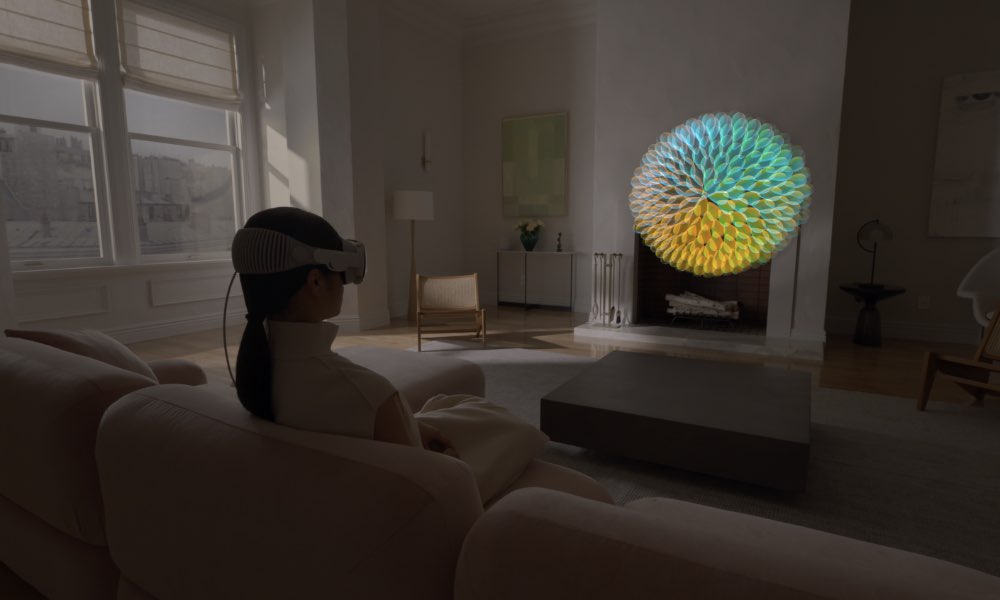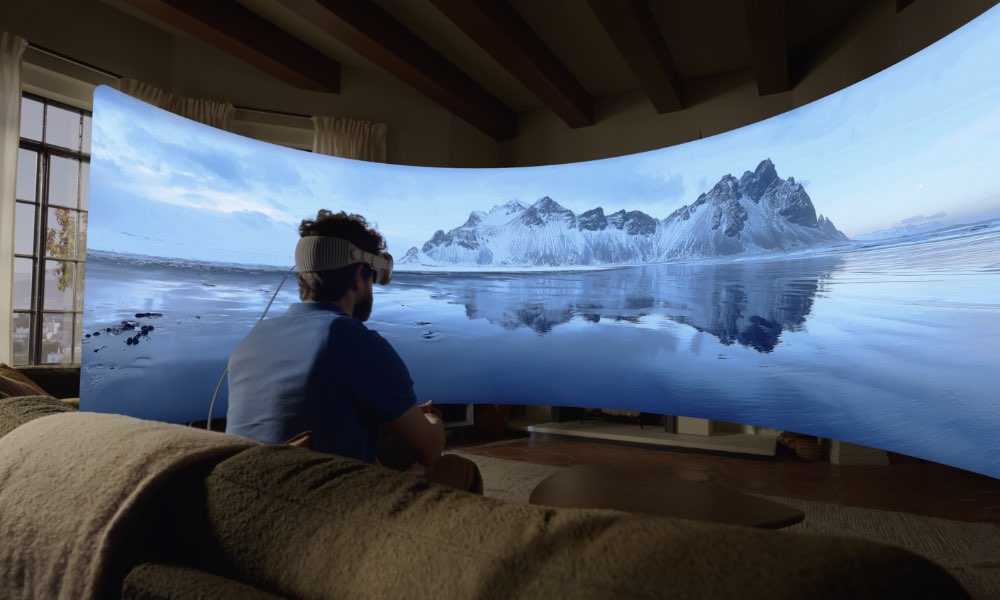Want to Try On a Vision Pro? You’ll Need to Sit Through a 25-Minute Sales Pitch
 Credit: Apple
Credit: Apple
Toggle Dark Mode
For most folks, the most exciting thing about the arrival of Apple’s Vision Pro headset next month won’t be shelling out $3,500 to actually buy one, but rather the ability to finally check out the spatial computing experience up close and personal.
While pre-orders for the new headset start this Friday, the real highlight of the season will be when they arrive in stores on Friday, February 2. That day, not only will the headsets be available for purchase by those early adopters with deep pockets, but there will also be plenty of demo units on hand for the rest of us to try out and see what all the fuss is about.
Apple will naturally have demo units available straight away on launch day, but it also appears the company is pulling out all the stops to ensure that potential customers know exactly what the company’s new headset is all about.
If you’re hoping to pop into an Apple Store and try one on for a few minutes, you may have to change your plans, as it seems Apple won’t be content unless it can ensure you get the full experience.
In this week’s edition of his Power On newsletter, Bloomberg’s Mark Gurman reveals that Apple has “prepared its most sophisticated sales pitch ever,” including a demo “longer than it takes to watch your favorite sitcom.”
As Gurman notes, Apple is facing some unique challenges when it comes to the Vision Pro, as it has its work cut out for it in introducing an entirely new concept to customers. The original iPod may have been a totally unique way of consuming music on the go, but it was still just a very advanced Walkman. The same is true for the iPhone, iPad, and Apple Watch, which were more sophisticated and sleek versions of well-known product categories.

The Vision Pro is something completely different. While augmented and virtual reality products exist, they’re not nearly as mainstream as music players, cell phones, and watches were before Apple’s take on them debuted. Plus, even for those who are familiar with the AR/VR concept, Apple wants to make it clear that the Vision Pro is much, much more than a gaming headset.
The Vision Pro will be a different beast. Few consumers are accustomed to wearing a mixed-reality headset, and Apple’s model requires particular care. If the device isn’t fitted to someone’s head correctly — or is missing the right lenses — the entire experience could be ruined, potentially costing Apple a $3,499 sale forever.
Mark Gurman
According to Gurman’s sources, Apple has already trained “several hundred” employees at Apple Park to walk them through the demo process, which will begin as soon as stores open on February 2 and go something like this:
- An employee will scan the user’s face with an app so the Apple specialist hosting the demo can set up the proper configuration of light seal, foam cushion, and band size for a perfect fit. Gurman notes there are “more than 25 shapes and sizes of light seals.”
- The stores will also be able to scan a person’s glasses for prescription information so they can put the appropriate ZEISS Optical Lens inserts in place.
- A demo Vision Pro unit will be assembled in the back room to the user’s specifications and send it out to the demo area.
- The demo host will show the unit to the customer and explain how the user interface works, including how to use eyes to control the pointer, how to select items with gestures, and even how to hold the headset properly and use the Fit Dial and Digital Crown for adjusting the headset and moving between the virtual and augmented reality modes.
- The user will place the device on their own head and then be taken through a series of calibration exercises by moving their eyes and hands and looking at patterns of differing brightness levels.
- Once everything is set up, the actual demo experience will begin, which will include taking the wearer through looking at images in the photos app, including panoramas, 3D spatial photos of a kid hitting a piñata, and a 3D spatial video of a birthday party.
- The demo will also include using the device as a computer, surfing websites in Safari, and opening and positioning multiple app windows.
- Lastly, customers will be shown immersive 3D movies, including “a compelling scene that makes users feel as if they’re on a tightrope.”

The Vision Pro units will also be preloaded with third-party visionOS apps for customers to check out.
Unlike previous product launches, Apple will also let its retail employees try the Vision Pro out before the launch. Part of this is for training; Apple couldn’t bring everybody to Cupertino, so it’s relying on those it has trained to pass their knowledge on to their colleagues, which involves taking them through the same demo process that customers will eventually experience.
The demos are intended to give potential customers a taste of the Vision Pro without overwhelming them — “ideally leaving them itching for more.”
Making sure customers stay comfortable in a Vision Pro is a key issue, and that’s harder to do the longer they wear it. Privately, several retail employees have said they felt their head was tired and sweaty after only about half an hour of use.
Mark Gurman
The demo experience may also vary slightly depending on which store you visit. Gurman says that the most prominent flagship stores will have “more than a dozen demo units available at any one time, along with dedicated sit-down areas where the presentations will take place,” but smaller stores may have only a single unit and a limited area to work in.
While Apple would surely like to sell as many Vision Pro headsets as possible, the company appears to be setting more realistic goals. Gurman says it’s told retail stores that they’ll need more inventory space during opening weekend to meet demand by early adopters but expects demand to slow down significantly after that. Instead, Apple’s in-store Vision Pro demos are primarily about helping folks understand and get excited about Apple’s spatial computing technology in general as an investment for the future. Turning them into Vision Pro buyers today is of secondary concern.






